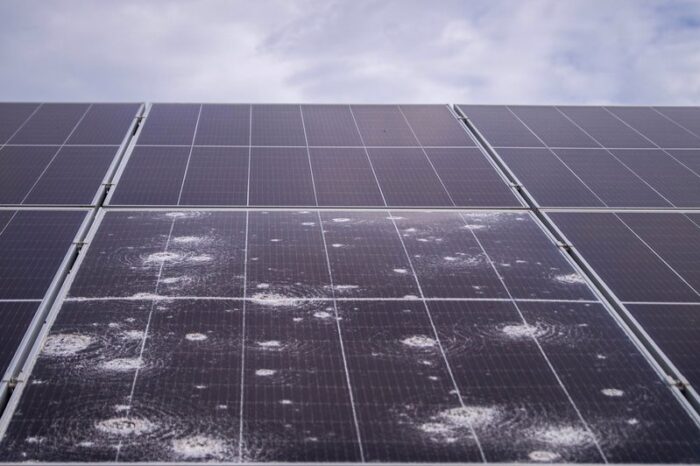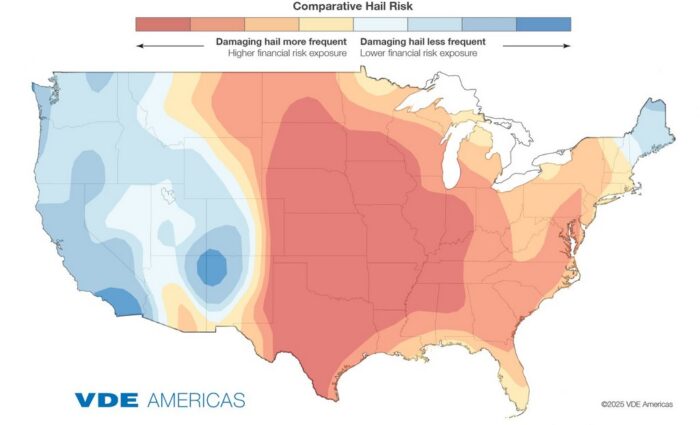VDE launches Hail Risk Atlas to improve solar decisions in hail-prone areas

Losses due to hail damage continue to mount for solar asset owners. As a result, module manufacturers are beefing up panels, and tracker companies are adjusting stow strategies. How much risk can be mitigated depending on location, procurement, insurance and operations? VDE Americas says it has the answer in the new Hail Risk Atlas.
VDE is a technical advisor that provides catastrophic risk assessment and mitigation services for solar. After a series of hailstorms caused hundreds of millions in damages to U.S. solar infrastructure, VDE got to work on the Hail Risk Atlas. This new VDE Hail Risk Atlas (part of the VDE’s Hail Risk Intelligence solutions) will forecast the economic risk of solar assets due to hail loss and hopefully provide a template for more defensible, financeable and insurable solar projects in hail-prone areas.
Hail Risk Atlas will quickly identify the level of risk associated with hail events, inform key decisions for project locations, equipment selection, insurance coverage and most importantly, effective hail defense protocols for both construction and operations.
“Despite the growing demand for large deployments of solar power generation infrastructure, when we speak to high-value solar asset owners it’s clear that the hail risk to these large-area assets is often unknown,” said Jon Previtali, vice president of digital services at VDE Americas.
How VDE Hail Risk works

The VDE Hail Risk Atlas is available for use on the Esri ArcGIS platform. The new offering uses proprietary test data and on-site forensics to model the hail resiliency of today’s wide range of solar modules and the effect of mounting system tilt angle.
Then, through advanced computer modeling coupled with ground-based radar and observational data, Hail Risk Atlas produces a wide range of hail risk maps and intelligence for use in assessing the risk of hail loss across the Continental US.
VDE’s Hail Risk Atlas consists of proprietary intelligence that charts key weather and financial risk metrics from low-risk regions to the most dangerous “known zones.”
Additionally, Hail Risk Atlas includes:
- Return intervals maps: Predicts the probability of hailstorms over a range of maximum hailstone sizes. Return Intervals support all commercial sectors concerned about hail risk, not just solar.
- Probable maximum loss (PML) and average annual loss (AAL) estimates: Informs equipment selection and sizing insurance coverage. This level of intelligence ensures that hail risk for new and operational solar projects, as well as other assets, is well understood and assets are protected to meet increasingly stringent requirements for investment and insurance.
“North America’s solar energy infrastructure is dramatically underprepared for catastrophic events like hail,” said John Sedgwick, president of VDE Americas. “We believe this level of weather mapping represents a huge step forward in how we can adapt to and mitigate extreme weather losses and gives the energy industry a new tool in its asset protection arsenal.”
In addition to its Hail Risk Atlas, VDE Hail Risk Intelligence solutions include an independent consulting practice that provides critical and timely hail intelligence and technical due diligence on planning and asset protection strategies.





Comments are closed here.